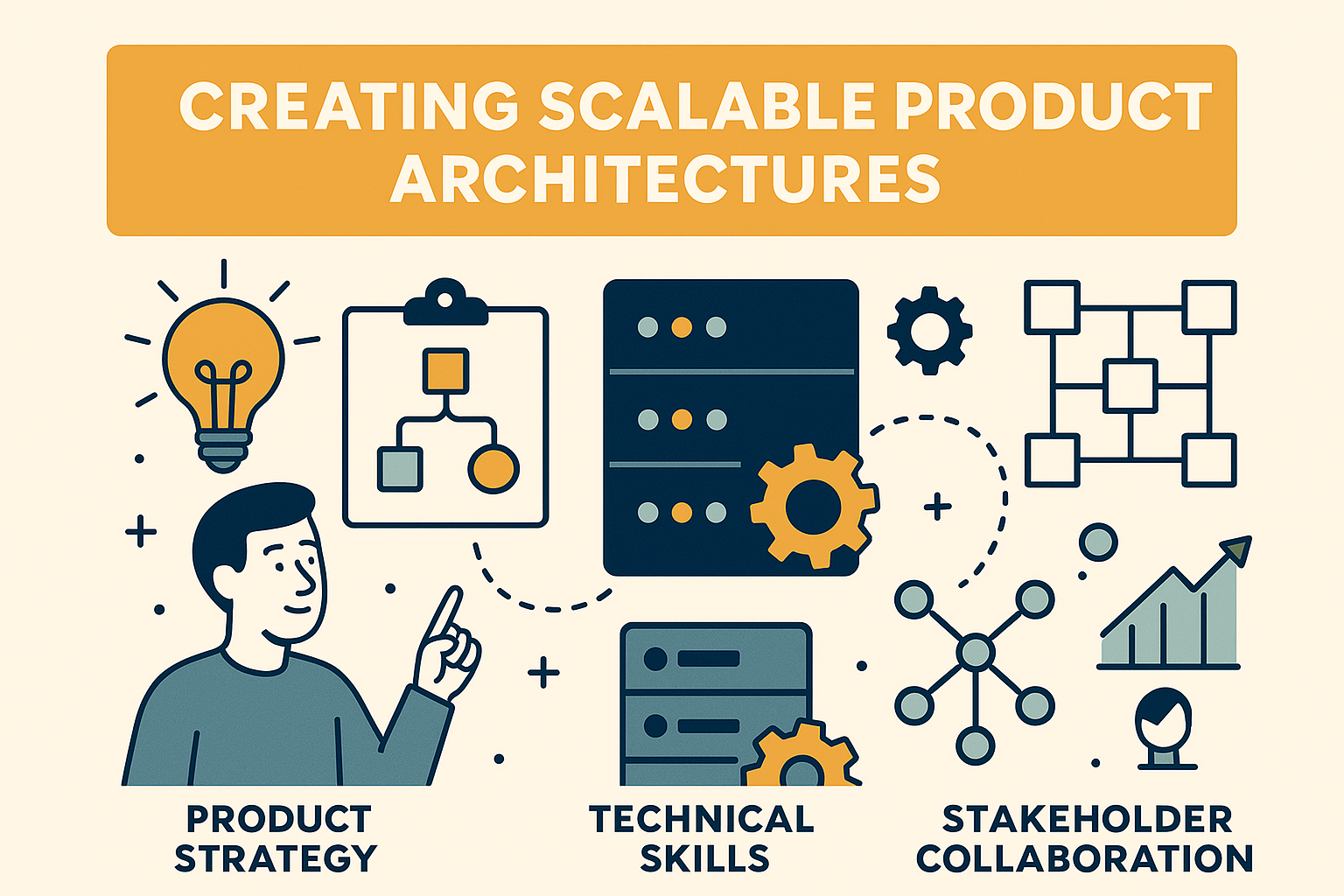Scalability is not a luxury—it’s a survival trait. In a world where user growth can spike overnight and feature sets evolve constantly, designing scalable product architecture from day one is crucial to delivering seamless experiences and maintaining operational resilience.
What Is Scalable Architecture?
Scalable product architecture refers to a system’s ability to handle increased load—whether that’s more users, more data, or more complex operations—without requiring a complete redesign. It’s about building in elasticity from the start so your product can grow without breaking.
Scalability isn’t just about hardware or servers. It touches every layer of the stack—data models, services, front-end responsiveness, APIs, and even deployment pipelines.
Key Principles of Scalable Architecture
1. Modularity and Separation of Concerns
Break your system into well-defined modules or Each component should do one job well.
This allows independent scaling (e.g., a heavily-used search service can scale separately from the billing system).
2. Microservices Over Monoliths
While monoliths are easier to start with, microservices allow for independent deployment, failure isolation, and scalability.
Services communicate via APIs and evolve separately, reducing
3. Stateless Services
Avoid storing session data on individual Use distributed caches (like Redis) or databases to store state.
Stateless services are easier to replicate and auto-scale in cloud
4. Elastic Infrastructure
Use cloud-native solutions like AWS, Azure, or GCP to scale compute and storage resources on demand.
Auto-scaling, load balancers, and container orchestration (e.g., Kubernetes) provide flexibility and cost control.
5. Asynchronous Processing
Offload non-blocking operations (like sending emails or generating reports) to background jobs or message queues.
This decouples workflows and improves performance under heavy
6. API-First and Contract-Driven Design
Design APIs that are versioned, backward-compatible, and easy to consume by both internal and external teams.
API contracts make collaboration smoother and enable front-end/backend to evolve independently.
Common Pitfalls to Avoid
Over-Engineering Early: Design for scale, but don’t build an enterprise-level system for a problem that doesn’t exist yet.
Ignoring Observability: Without monitoring, logging, and tracing, scaling issues go unnoticed until systems fail.
One-Size-Fits-All Databases: Choose data stores based on use case—NoSQL for unstructured, SQL for relational, time-series DBs for metrics, etc.
Tight Coupling Across Services: Keep service dependencies If your billing service can’t function without your user service, scalability will suffer.
Conclusion
Scalable architecture is as much about mindset as it is about design. It’s the practice of anticipating change and building systems that embrace growth rather than resist it.
Great architecture doesn’t just support scale—it drives it. By focusing on modularity, flexibility, and resilience, engineering teams can create products that perform reliably today and evolve confidently tomorrow. Scalable architecture isn’t a future investment; it’s a present-day foundation for sustainable product success.





